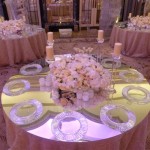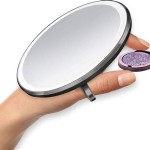Antique Gold Mirror French: A Reflection of History and Elegance
Antique gold mirrors, particularly those of French origin, hold a unique allure. They represent a tangible link to the past, embodying centuries of craftsmanship, artistic evolution, and changing tastes. Their presence can elevate any interior, adding a touch of history and a whisper of old-world elegance.
Identifying Authentic French Antique Gold Mirrors
Authenticating antique gold mirrors requires careful consideration of several factors. Age is a primary indicator, often reflected in the mirror plate itself. Older mirrors, pre-dating the 19th century, typically show signs of silvering deterioration, such as foxing or black spots. The mirror's frame offers further clues, with hand-carving and gilding techniques indicative of a particular period and region.
Furthermore, examining the back of the mirror can provide valuable insights. Older French mirrors often feature wooden backings, sometimes with handwritten markings or labels. These details can assist in verifying the mirror's provenance and era.
The Evolution of French Gold Mirror Design
The design of French gold mirrors has evolved significantly over the centuries. The 17th and 18th centuries witnessed the rise of opulent Rococo and Baroque styles, characterized by ornate carvings, intricate detailing, and lavish use of gilding. Mirrors from this era frequently featured mythological figures, floral motifs, and elaborate scrollwork.
The Neoclassical period that followed saw a shift towards simpler, more restrained designs. Symmetry, geometric shapes, and classical motifs became prominent. The gilding, though still present, tended to be less extravagant, emphasizing clean lines and elegant proportions.
Later, the Art Nouveau and Art Deco movements introduced new aesthetic sensibilities. Art Nouveau embraced flowing lines, organic forms, and stylized floral patterns, while Art Deco favored geometric abstraction and bold, streamlined designs. These stylistic shifts are reflected in the frames and overall design of antique gold mirrors from these periods.
Materials and Techniques
Traditional French gold mirrors were crafted using high-quality materials and time-honored techniques. The frames were typically constructed from wood, often walnut, oak, or mahogany. The gilding process involved meticulously applying thin layers of gold leaf to the carved wood, creating a rich, lustrous finish.
The mirror plate itself was traditionally made of mercury glass, a process that involved backing a sheet of glass with a thin layer of mercury and tin. This method produced a reflective surface with a characteristic warm, slightly distorted appearance, a hallmark of antique mirrors.
Caring for Antique Gold Mirrors
Preserving the beauty and integrity of an antique gold mirror requires proper care and attention. Avoid placing the mirror in direct sunlight, which can fade the gilding and damage the mirror plate. Regular dusting with a soft, dry cloth is recommended, while cleaning agents should be avoided as they can strip the gilding or damage the delicate surface.
For more thorough cleaning or restoration, consulting a professional conservator is advisable. They possess the expertise to address specific issues, such as repairing damaged gilding or stabilizing the mirror plate, without compromising the mirror's historical integrity.
The Value of Antique Gold Mirrors
The value of antique gold mirrors is determined by several factors, including age, condition, provenance, and artistic merit. Mirrors from notable periods or with documented historical connections often command higher prices. Similarly, mirrors in exceptional condition, with minimal damage or restoration, are highly sought after by collectors.
The quality of the craftsmanship also plays a significant role in determining value. Mirrors with intricate hand-carving, expert gilding, and rare materials are typically considered more valuable than those with simpler designs or mass-produced elements.
Displaying Antique Gold Mirrors
Antique gold mirrors can enhance a variety of interior styles, from traditional to contemporary. Their placement should be considered carefully to maximize their impact and create a harmonious balance within the space. A large, ornate mirror can serve as a focal point in a living room or dining room, while smaller mirrors can be used to create intimate vignettes in hallways or bedrooms.
The surrounding décor should complement the mirror's style and period. For example, a Rococo mirror might be paired with antique furniture and rich fabrics, while a Neoclassical mirror could be displayed against a backdrop of muted colors and simple, elegant décor.

Antique French Gold Mirror

Anthropologie Inspired Diy French Gold Mirror Antique Frame

Oversized Full Length Mirror Antique Gold Handmade French

The Annecy Mirror Antique Gold 4ft High 209 00 Mirrors Cau Luxury Furniture And Rococo Reion Baroque French Style Specialist

Large Antique 19th Century French Gold Gilded Mirror With Crest At 1stdibs

Anthropologie Inspired Diy French Gold Mirror So Much Better With Age

Antique Gilt Carved Mirror S Bookmarks Design Inspiration And Ideas

French Mirror Baroque Wall Antique Style Mirrors Gold

Vintage French Gold Color Frame Mirror For At Pamono

Antique French Style Wall Mirror Decorative Bevelled Gold Shabby Chic Mirrors








